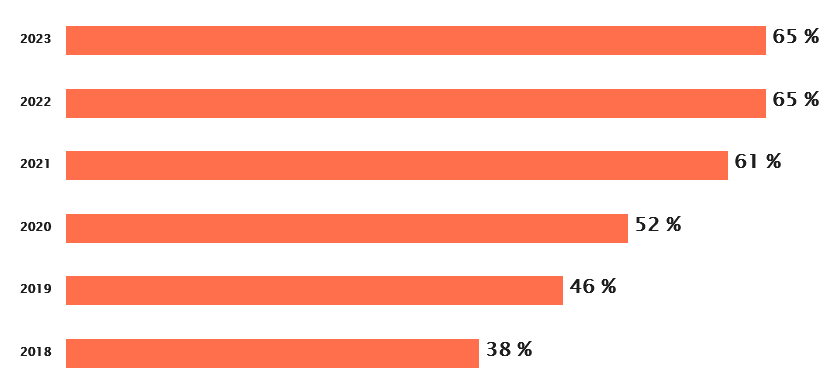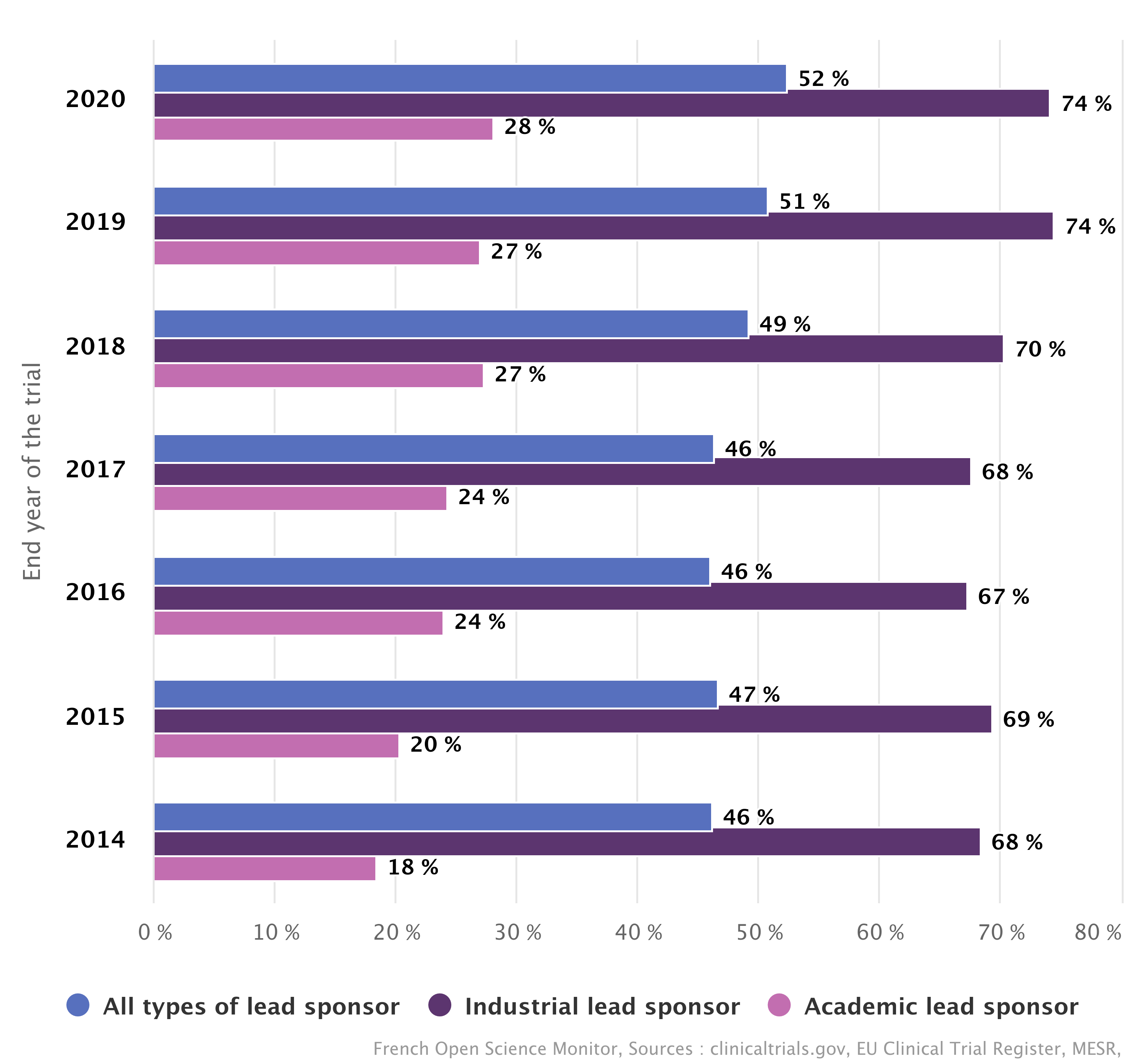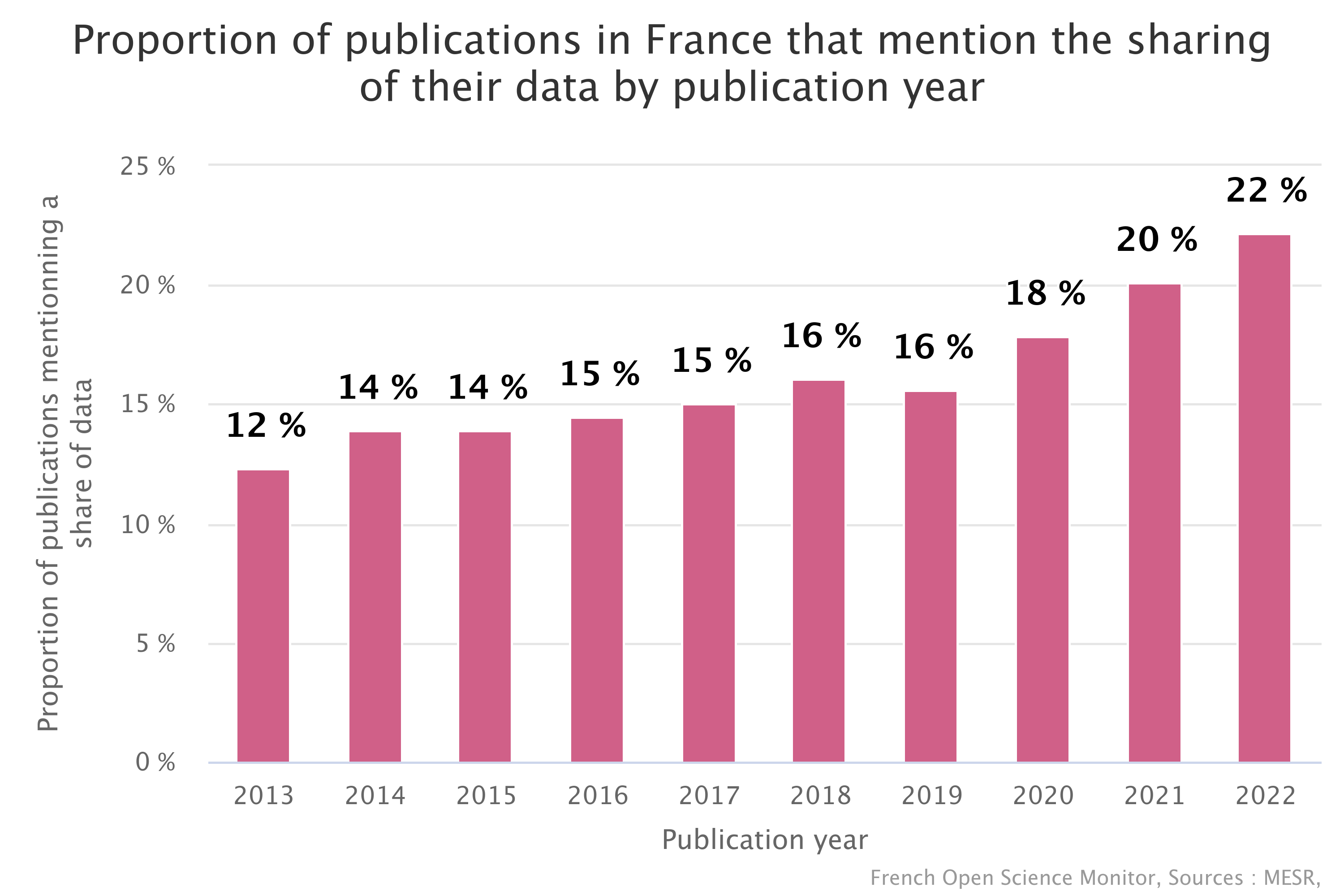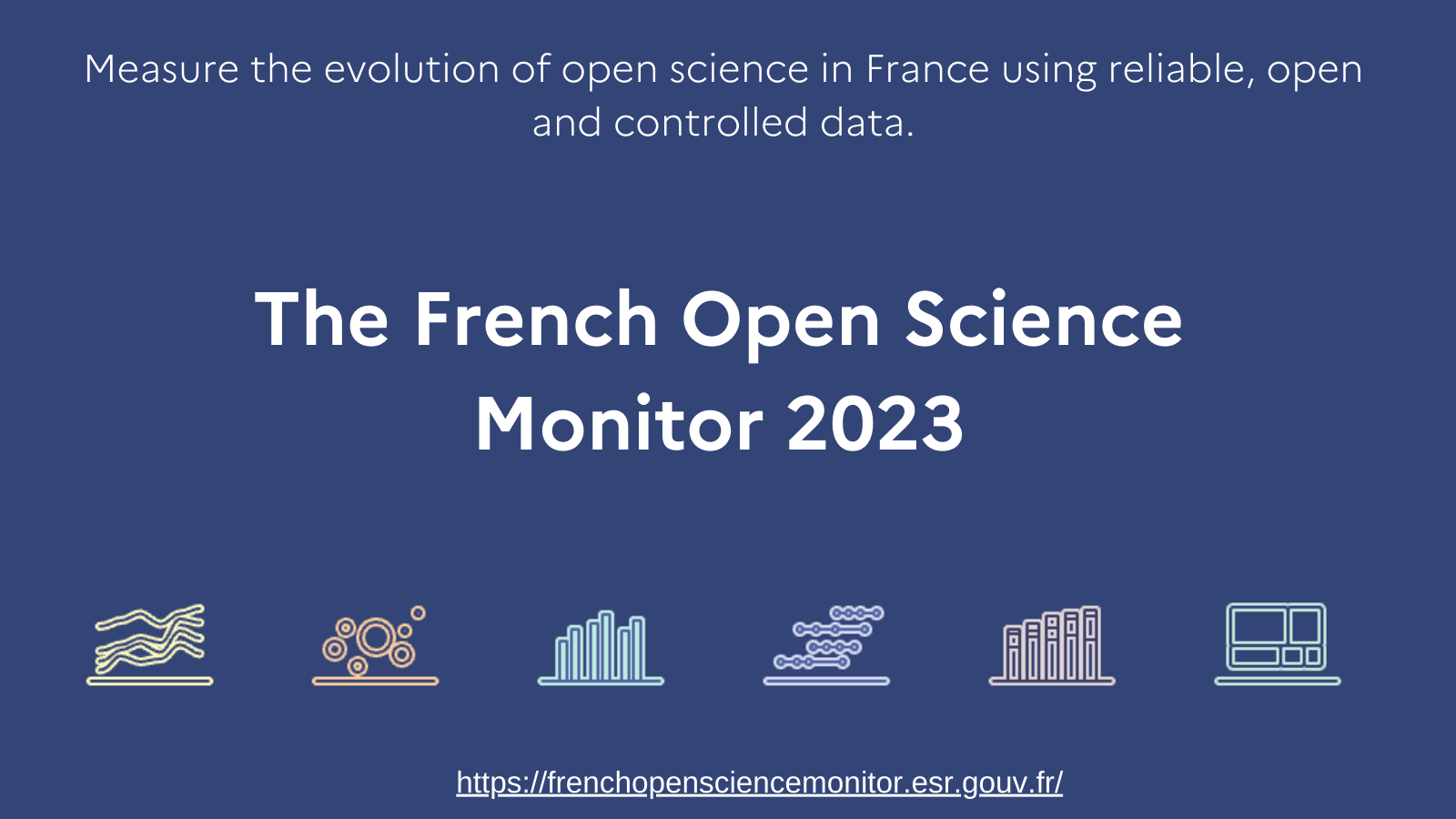A new issue of the French Open Science Monitor
The Ministry of Higher Education and Research publishes the results of the French Open Science Monitor for 2023 which measures the rate of French scientific publications in open access.Thanks to an innovative methodology, the Monitor has been enriched – since 2022 – with new indicators on the opening of doctoral theses, as well as research data, codes and software associated with publications.
According to the 2023 edition of the Open Science Monitor (BSO), 65% of the 160,000 French research publications published in 2022 were open access in December 2023, a stable rate compared to the previous year. The level of open access varies significantly from one discipline to another, but each discipline remains at a stable level of open access. On the other hand, openness via the publisher’s platform is increasing (+3 pts), while openness via open archives is decreasing (-3 pts).
Open access rate of scientific publications in France, with a Crossref DOI, published during the previous year by observation year

This graph presents, for each observation date since 2018, the open access rate of scientific publications in France, with a Crossref DOI, published during the previous year. Thus, 65% of French scientific publications, with a Crossref DOI, published in 2021 were in open access in 2022 (observation date). In 2022, this rate also rises to 65%.
In the healthcare sector, the proportion of clinical trials that share their results within 3 years of the end of the trial remains low, but this indicator is rising from 46% in 2014 to 52% in 2020.
Share of registered clinical trials completed in 2020 that posted a result and/or published a research paper within 3 years after the end of the clinical trial

This graph shows a slow but continuing progression since 2014 in the proportion of completed observational studies that have posted or published results within 3 years of study completion. As this indicator takes into account clinical trials that have been declared completed for 3 years, it only allows us to observe the year 2020 at best, i.e. with three years’ hindsight. However, the current rate is still too low.
The rate of publications sharing code is slightly below 20% (+1pt), while the rate of publications sharing a dataset rises to 22% (+2 pts).

This graph shows, by publication year, the proportion of publications for which a mention of data sharing has been detected, among the publications that mention data production. We have chosen to focus our analysis on publications from year n-1, in order to have sufficient data.
Indicators dedicated to research data and to codes and software are based on a truly pioneering methodology are considered to be in bêta version, which means that the methodology is still being improved.
See the French Open Science Monitor website






